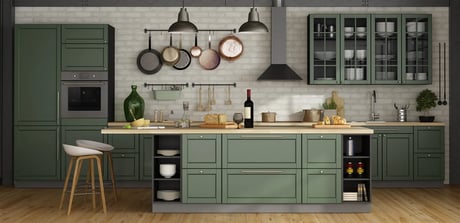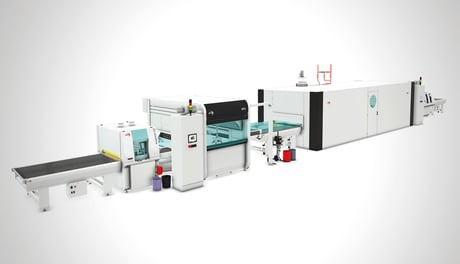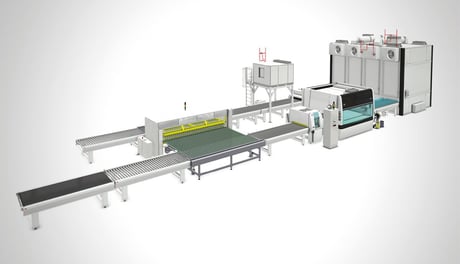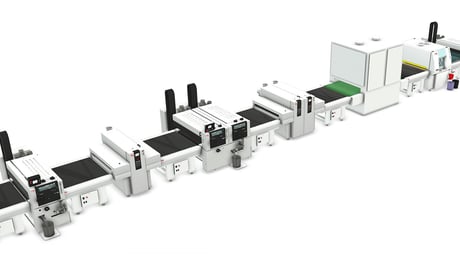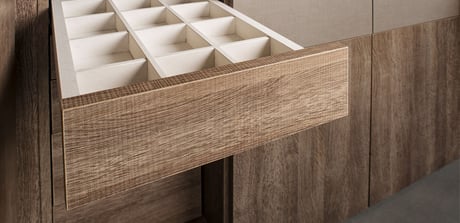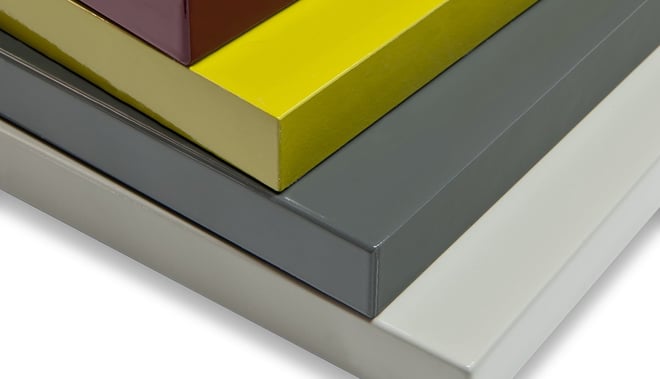
Upper and lower panel surface cleaning group
When coating the edges of a flat panel, the operation gives rise to a coating seam which overlaps and extends about 1 mm over the flat panel surface. With a curved radius on one edge, the coating seam will be on one side, but in some cases the radius is present between both the corresponding upper and lower sides of the panel, meaning you will need to deal with 2 overlaps. In simple terms, this overlap is an excess of paint covering a peripheral section of the flat surface, which is often in melamine. This coating seam needs to be removed, but how?
Machines can either be equipped with the necessary sanding belt, even a wide belt spanning the full panel width, or can be sent through a sanding machine after curing. Now, because melamine is relatively soft compared to the cured UV coating seam, this generates uneven wear on the sanding belt, which will have to be replaced before it is fully consumed. Furthermore, to counteract the resistance of the harder UV coating seam, companies may be obliged to use a special sanding device with pads, at extra expense. Whatever the solution, sanding in order to remove the overlap is a problem and incurs unwanted costs.
The simplest way to avoid the use of a special sanding device or run the risk of poor sanding belt optimisation is to remove the UV coating seam before curing. This is managed by our patented surface cleaning group. Complete with a steel roller, turning in the opposite direction with respect to the panel as it transits through the machine, this patented system removes the excess varnish enabling sanding to be performed without any problems. The sanding belt is consumed homogeneously and no extra tooling is required to sand the overlap after curing. Absence of a device removing excess varnish after curing helps avoid potential damage such as superficial micro-cracking, which then leads to infiltration problems.
Moreover, one of the key benefits of this approach are the savings obtained in terms of coating consumption. By removing the overlapping seam before curing, and recycling the coating, users can accumulate significant savings, without mentioning the inferior costs related to all the sanding operations avoided.
Contact us and discuss your needs with a finishing expert.
